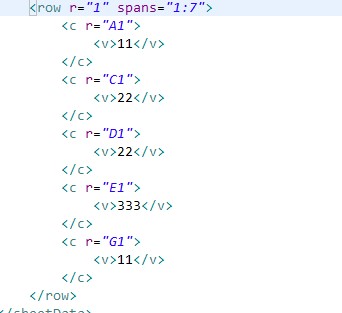Java SE security tutorial - Step 3
After authenticating a client, as in the previous step, you can give security privileges through eXtreme Scale authorization mechanisms.
Before you begin
Be sure to have completed Java SE security tutorial - Step 2 prior to proceeding with this task.
About this task
The previous step of this tutorial demonstrated how to enable authentication in an eXtreme Scale grid. As a result, no unauthenticated client can connect to your server and submit requests to your system. However, every authenticated client has the same permission or privileges to the server, such as reading, writing, or deleting data that is stored in the ObjectGrid maps. Clients can also issue any type of query. This section demonstrates how to use eXtreme Scale authorization to give various authenticated users varying privileges.
Similar to many other systems, eXtreme Scale adopts a permission-based authorization mechanism. WebSphere® eXtreme Scale has different permission categories that are represented by different permission classes. This topic features MapPermission. For complete category of permissions, see Client authorization reference.
In WebSphere eXtreme Scale, the com.ibm.websphere.objectgrid.security.MapPermission class represents permissions to the eXtreme Scale resources, specifically the methods of ObjectMap or JavaMap inte易做图ces. WebSphere eXtreme Scale defines the following permission strings to access the methods of ObjectMap and JavaMap:
read: Grants permission to read the data from the map.
write: Grants permission to update the data in the map.
insert: Grants permission to insert the data into the map.
remove: Grants permission to remove the data from the map.
invalidate: Grants permission to invalidate the data from the map.
all: Grants all permissions to read, write, insert, remote, and invalidate.
The authorization occurs when a client calls a method of ObjectMap or JavaMap. The eXtreme Scale runtime checks different map permissions for different methods. If the required permissions are not granted to the client, an AccessControlException results.
This tutorial demonstrates how to use Java Authentication and Authorization Service (JAAS) authorization to grant authorization map accesses for different users.
Procedure
Enable eXtreme Scale authorization. To enable authorization on the ObjectGrid, you need to set the securityEnabled attribute to true for that particular ObjectGrid in the XML file. Enabling security on the ObjectGrid means that you are enabling authorization. Use the following commands to create a new ObjectGrid XML file with security enabled.
Navigate to the xml directory.
cd objectgridRoot/xml
Copy the SimpleApp.xml file to the SecureSimpleApp.xml file.
cp SimpleApp.xml SecureSimpleApp.xml
Open the SecureSimpleApp.xml file and add securityEnabled="true" on the ObjectGrid level as the following XML shows:
<?xml version="1.0" encoding="UTF-8"?> <objectGridConfig xmlns:xsi="http://www.w3.org/2001/XMLSchema-instance" xsi:schemaLocation="http://ibm.com/ws/objectgrid/config ../objectGrid.xsd" xmlns="http://ibm.com/ws/objectgrid/config"> <objectGrids> <objectGrid name="accounting" securityEnabled="true"> <backingMap name="customer" readOnly="false" copyKey="true"/> </objectGrid> </objectGrids> </objectGridConfig>
Define the authorization policy.
In the pre-client authentication section, you created three users in the key store: cashier, manager, and administrator. In this example, the user "cashier" only has read permissions to all the maps, and the user "manager" has all permissions. JAAS authorization is used in this example. JAAS authorization uses authorization policy file to grant permissions to principals. The following file is defined in the security directory:
grant codebase "http://www.ibm.com/com/ibm/ws/objectgrid/security/PrivilegedAction" principal javax.security.auth.x500.X500Principal "CN=cashier,O=acme,OU=OGSample" { permission com.ibm.websphere.objectgrid.security.MapPermission "accounting.*", "read "; }; grant codebase "http://www.ibm.com/com/ibm/ws/objectgrid/security/PrivilegedAction" principal javax.security.auth.x500.X500Principal "CN=manager,O=acme,OU=OGSample" { permission com.ibm.websphere.objectgrid.security.MapPermission "accounting.*", "all"; };
Note:
The codebase "http://www.ibm.com/com/ibm/ws/objectgrid/security/PrivilegedAction" is a specially-reserved URL for ObjectGrid. All ObjectGrid permissions granted to principals should use this special code base.
The first grant statement grants "read" map permission to principal "CN=cashier,O=acme,OU=OGSample", so the cashier has only map read permission to all the maps in the ObjectGrid accounting.
The second grant statement grants "all" map permission to principal "CN=manager,O=acme,OU=OGSample", so the manager has all permissions to maps in the ObjectGrid accounting.
Now you can launch a server with an authorization policy. The JAAS authorization policy file can be set using the standard -D property: -Djava.security.auth.policy=../security/ogAuth.policy
Run the application. www.zzzyk.com
After you create the above files, you can run the application.
Use the following commands to start the catalog server. For more information about starting the catalog service, see Starting the catalog service in a stand-alone environment.
Navigate to the bin directory: cd objectgridRoot/bin
Start the catalog server.
startOgServer.sh catalogServer -clusterSecurityFile ../security/security.xml -serverProps ../security/server.properties -jvmArgs -Djava.security.auth.login.config="../security/og_jaas.config"
startOgServer.bat catalogServer -clusterSecurityFile ../security/security.xml -serverProps ../security/server.properties -jvmArgs -Djava.security.auth.login.config="../security/og_jaas.config"
The security.xml and server.properties files were created in the previous step of this tutorial.
T
You can then start a secure container server using the following script. Run the following script from the bin directory:
# startOgServer.sh c0 -objectGridFile ../xml/SecureSimpleApp.xml -deploymentPolicyFile ../xml/SimpleDP.xml -catalogServiceEndPoints localhost:2809 -serverProps ../security/server.properties -jvmArgs -Djava.security.auth.login.config="../security/og_jaas.config" -Djava.security.auth.policy="../security/og_auth.policy"
startOgServer.bat c0 -objectGridFile ../xml/SecureSimpleApp.xml -deploymentPolicyFile ../xml/SimpleDP.xml -catalogServiceEndPoints localhost:2809 -serverProps ../security/server.properties -jvmArgs -Djava.security.auth.login.config="../security/og_jaas.config" -Djava.security.auth.policy="../security/og_auth.policy"
Notice the following differences from the previous container server start command:
Use the SecureSimpleApp.xml file instead of the SimpleApp.xml file.
Add another -Djava.security.auth.policy argument to set the JAAS authorization policy file to the container server process.
Use the same command as in t
补充:综合编程 , 安全编程 ,



